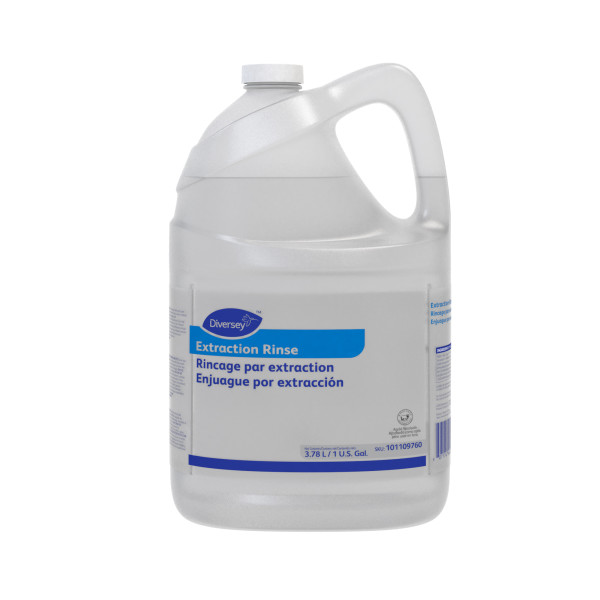Winter Floor Maintenance: Best Practices from Our Floor Expert, Tom Vacek

Winter brings a unique set of challenges for floor care, from rock salt and ice melt to increased moisture and dirt. To help maintain floors effectively and safely during the season, Tom Vacek, our Resident Floor Expert, shares essential steps for tackling winter-specific debris and residue, ensuring floors look their best all winter long.
Step 1: Start with a Quality Entry Matting System
A well-placed entry matting system is your first line of defense against winter conditions like salts, snow, mud and water. Entry mats capture most dirt before it reaches the main floors, but rock salt and ice melt residue can still get tracked further in or seep beneath mats, potentially harming the floor finish. Removing mats entirely from the area to be cleaned is critical for effective maintenance. This prevents water or salt from being pushed under the mat, where it could damage the floor or create a hidden slip hazard.
Read More: Get Winter-Ready: Essential Facility Tips for a Safe and Clean Season
Step 2: Remove Large Debris
Before applying any cleaning solution, sweep away larger debris, such as clumps of ice melt, rock salt or mud, which can scratch or damage floors if left unattended. This initial sweep makes cleaning more efficient and protects the floor’s finish.
Step 3: Choose the Right Floor Cleaner
Winter care requires specific cleaning solutions to prevent damage from salts and residue. For routine cleaning, a neutral floor cleaner is ideal for maintaining finishes without causing wear. Applied with an auto scrubber and a red cleaning pad, it effectively removes everyday dirt and grime. However, neutral cleaners may leave a white haze if they interact with rock salt.
For salt-heavy areas, Tom recommends using a neutralizer, which is slightly acidic and designed to break down salt deposits and other residues. Neutralizers don’t leave behind haze but should only be used during winter since they can damage floors over time if used daily.
Read More: Neutral Floor Cleaner vs. Neutralizer: What’s the Difference?
Step 4: Apply Floor Neutralizer
For effective application, follow these steps:
Dilution: Follow the manufacturer’s instructions to correctly dilute the floor neutralizer. At most FBG job sites, we use Diversey neutralizer, which comes in an easy-to-use dissolvable tablet form—simply add one tablet per three gallons of water.
Method: Use either a mop and bucket or an auto scrubber. With the mop and bucket, apply the neutralizer evenly over manageable sections, allowing it to sit for a few minutes to break down residue. Replace the solution with clean water and rinse the mop regularly to avoid redistributing salt. For auto scrubbers, apply and remove the neutralizer in a single pass, which saves time and reduces slip risks by drying floors quickly.
After applying the neutralizer, inspect the area. If any white streaks remain, repeat the process. Carpets face their own winter challenges, with salt, moisture and dirt accumulating and embedding into fibers. To tackle this, you can safely use a neutralizer with carpet extractors—just add an extraction rinse for optimal results. At most FBG job sites, we use Diversey extraction rinse. Be sure to work in small, manageable sections, diluting the extraction rinse with ½ ounce per gallon of water.
Tip: Be sure to clean auto scrubber and carpet extractor parts after each use, as salt can corrode components in the equipment over time.
Tips for High-Traffic Areas
Winter debris builds up quickly in high-traffic areas, making daily maintenance essential. Clean these areas normally until rock salt or haze is visible, then switch to a neutralizer to tackle the buildup.
Diversey floor finishes provide excellent slip resistance in high-traffic areas, while walk-off mats are ideal for protecting floors that do not have finishes. For added winter protection, FBG recommends New Pig Grippy Floor Mats, which can be applied to any floor surface to prevent slips and capture moisture and debris.
Preparing Your Floors for Winter
Get ahead of winter floor damage by prepping before the first snow falls. Track when rock salt is first put out and keep watch for street sweepers as a signal that winter is wrapping up. If desired, FBG can apply protective floor finishes, where appropriate, to help floors withstand the season’s harsher conditions. With a proactive approach to floor maintenance, you can keep your floors safe and looking their best throughout winter. For more tips or to arrange a winter floor care service, contact FBG Facility Services.